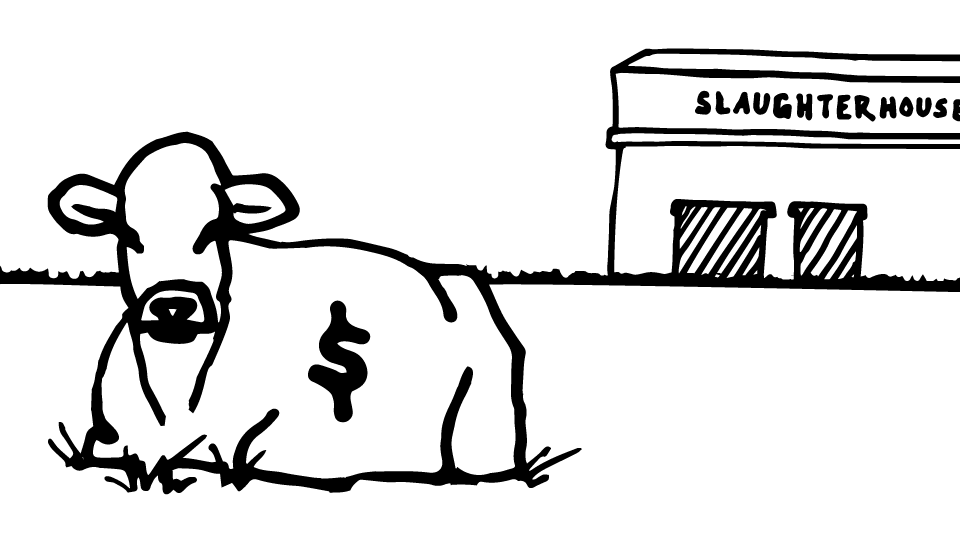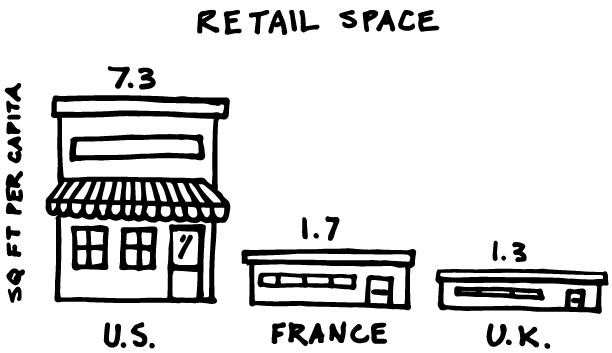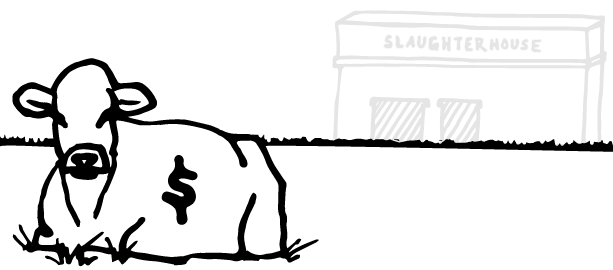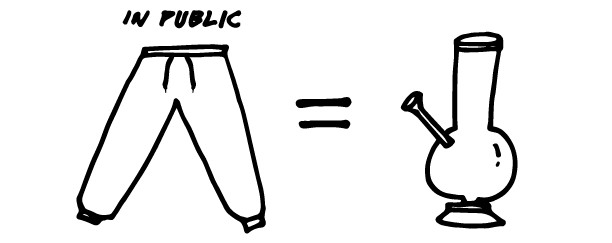
Reckoning in Retail
Reckoning in Retail
Analysts have been bearish on retail for several years, but the sector kept marching on. Stagnant wages, an overstored America, changes in consumer purchase behavior (like buying more coffee and phones and less of everything else), fast fashion, and Amazon have created the perfect storm. Despite this, many high-end mall REIT stocks hit all-time highs, and there have been several retail success stories since the crisis. However, shit is getting real.

Don’t get me wrong, retail is a great business… as long as you work for:
— Amazon
— fast fashion
— Sephora or Ulta
Other than that, stay away. Major retail brands are closing 3,000 stores, and that’s just the tip of the iceberg. I’m meeting with the CEO of an iconic department store next week. She asked for a view on their future, and what to do. In sum, my thoughts: You. Are. So. Fucked.
A summary of millennial shopping behavior and preferences: they will not go into a store that has an escalator, full stop. And department stores have escalators. “Fast fashion” refers to the supply chain, but it also aptly describes today’s consumer, who wants what she wants… at warp speed. People are no longer going to stores for products. They can find them for less online. They go to stores for people (experts). Consumers will not navigate a 300-meter maze of fragrance and housewares departments, then travel into the sky 50 feet (3 floors) to find out you don’t have a size 7 Aquazzura red velvet over-the-knee boots.
Grandma Is Dying and That’s… OK
We make massive investments to extend life beyond what is rational, even humane, for people and businesses. We can’t wrap our heads around the notion of a good death. I work with a yellow pages firm — go figure. Fortunately for them, us, and the investors, they know the business has stage-12 cancer, and it’s going to die. So, we do our best to make the business comfortable, and milk the shit out of it so we can invest in growth areas of the business.

Firms blessed with high margins and cash cows can be very profitable when in decline, as long as management are adults and don’t perform unnecessary surgeries — investing in unnatural attempts make grandma young again.
Only 11 of the Dow 100 from a century ago are still around. Your kid will almost certainly outlive every company we now think of as young, and destined to conquer the world. Weren’t we all?
What Estée Lauder and L’Oréal Should Do
Beauty is getting ugly (couldn’t resist). In sum, big beauty brands are having their lunch eaten by independents who:
— have mastered new mediums (Instagram, Snapchat)
— enjoy ready-fire-aim supply chains and product development
— wave their middle finger at traditional influencers (print editors)
— refuse to enter into a suicide pact with their distribution (department / drug stores), and embrace new channels (Amazon, Ulta, etc.)
This march of the independents is happening across the consumer world. As the short-tail is fattening (consolidating) in tech, the long-tail has new life in the consumer world. We are in the Age of the Artisan, with new tools and platforms that obviate the need to defer to the brand. Caciocavallo Podolico cheese and Drunk Elephant Virgin Marula Luxury Facial Oil catch fire sooner via platforms that let us share (exceptional) things and ideas with our social graph.
In sum, product is the new black. And this is bad for established food and beauty conglomerates, as their business is about scale and ad-supported brands, which are beginning to reek in the minds of the growing cohort of influential artisans. I believe broadcast advertising (print and tv) is beginning to communicate that, when it comes to product innovation, they are out of ideas. If you had them, you wouldn’t need to interrupt me with your shitty advertising.
So, what’s a girl (beauty conglomerate) to do? I believe the biggest opportunity for Estée Lauder, L’Oréal, LVMH, or maybe even a department store firm is… drugs. Specifically, they should brand cannabis and invest in captive distribution — marijuana dispensaries. The cannabis industry is growing faster than any $1B+ industry in history with the exception of broadband. Except the distribution for the $7B industry is bad. Not awful, but bad.
I did some research today, in Aspen. The dispensaries have sort of a “keep your head down, if I’m here I’m a loser” vibe. The store associates are friendly, relatively informed, but seem as if, outside of work, the pillars of their life are skateboarding, Planet of the Apes movies, and doing things that have no real justification. In addition, two-thirds of the merchandising should just go away — owning a bong is like wearing sweatpants out in public. Just. Don’t.

Kiehl’s and Clinique’s apothecary and laboratory positioning, respectively, are spot on. What the industry is screaming for is to bring users (a lot of people) out of the shadows, make it fun, add credibility via a health / medicinal positioning, and provide a sense of discovery vs. wondering, “How did I end up in a marijuana dispensary in Aspen?” These firms’ ability to marry R&D and artisanship with the illusion of scarcity and great retail environments augurs the next Warby Parker / Apple Store / Ulta waiting to birth. I haven’t been this excited about an idea, or, come to think of it, this hungry in a while…
So, as I’ve now written this idea down, I get to see, in the morning, if it still holds muster, or if I was just, well… high.
Life is so rich,
Scott
PS: Best research / daily email is CBInsights, and I hate them for it.
0 Comments
Need more Scott in your life?
The Prof G Markets Pod now has a newsletter edition. Sign up here to receive it every Monday. What a thrill.

